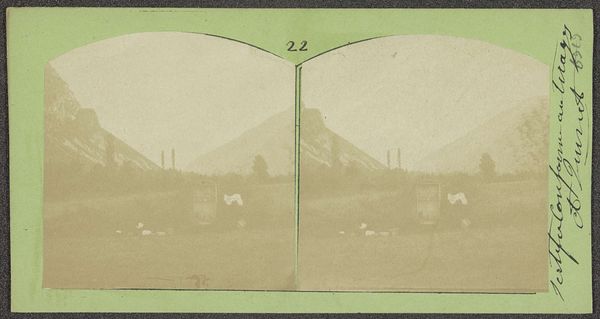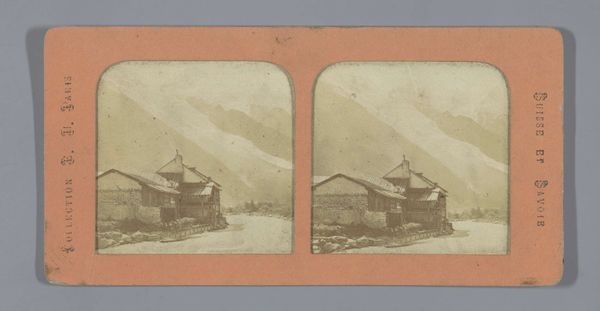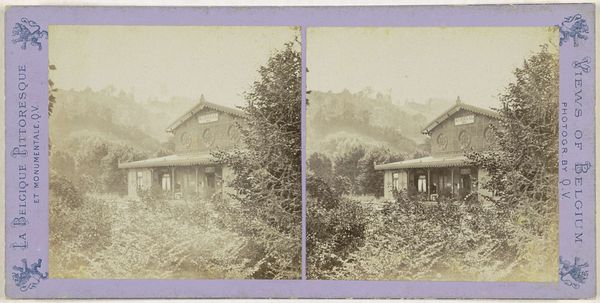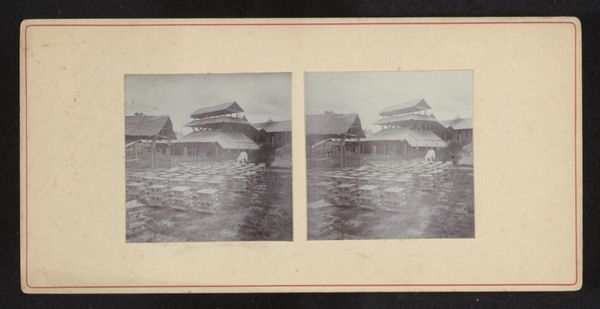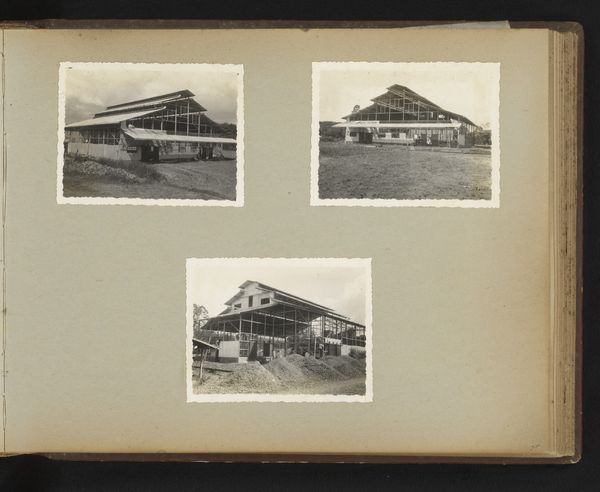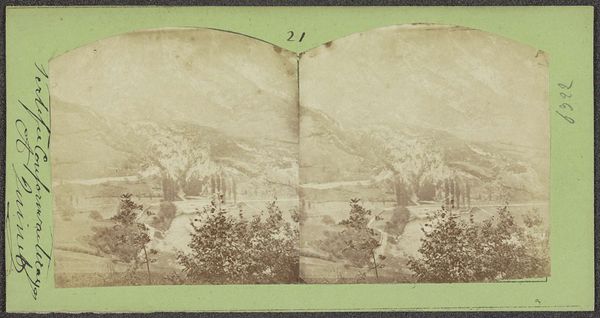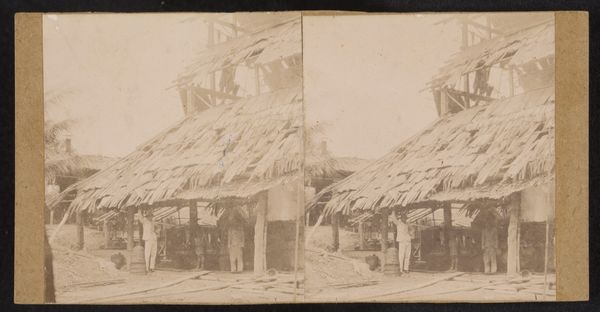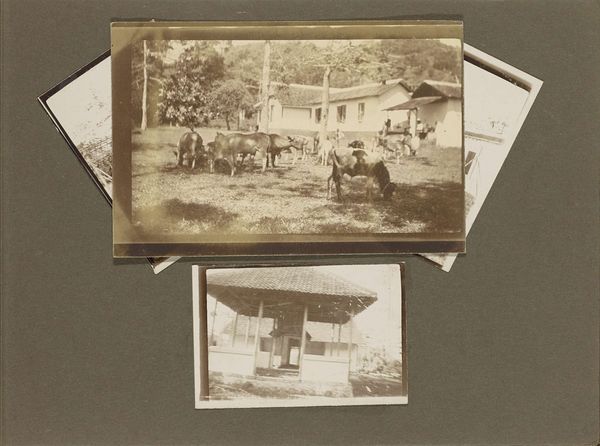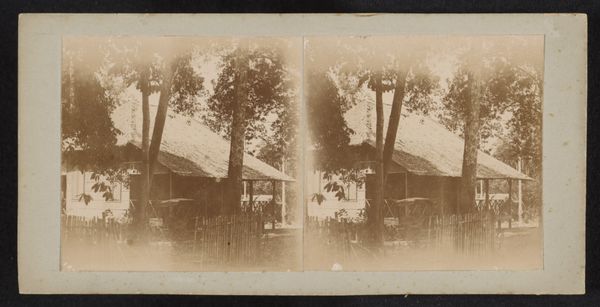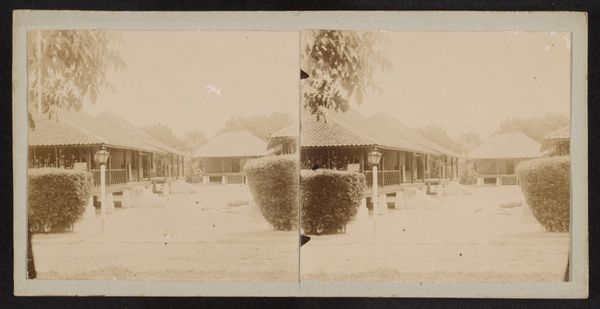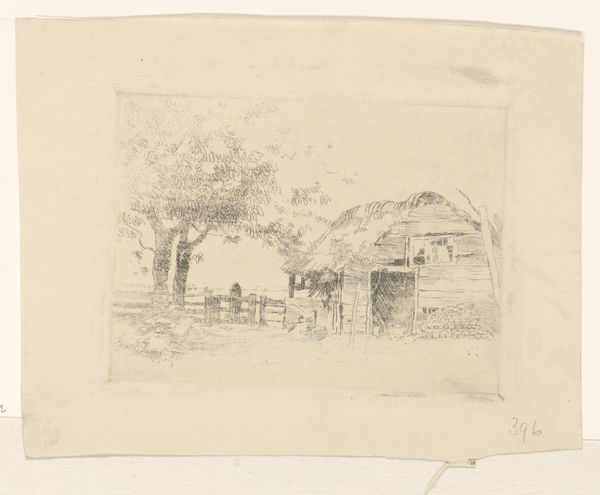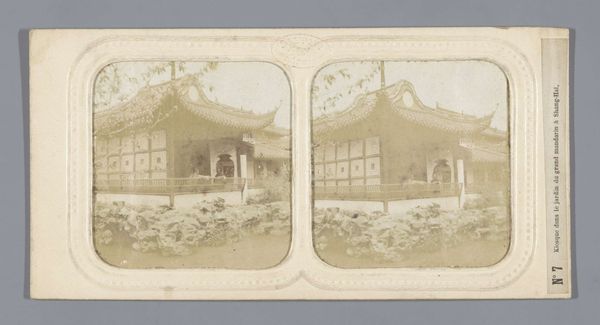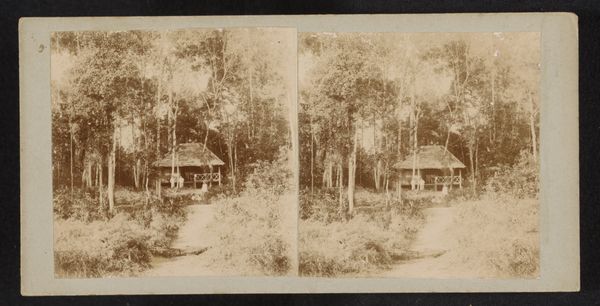
Dimensions: height 90 mm, width 171 mm, height 76 mm, width 77 mm, height 76 mm, width 77 mm
Copyright: Rijks Museum: Open Domain
Editor: This is a daguerreotype by Achille Quinet, titled "Prieel met rieten dak met op de achtergrond de Alpen," which I understand translates to "Arbor with thatched roof with the Alps in the background." It dates from around 1860-1880. The faded quality of the image really enhances the rustic nature of the architecture. What catches your eye in this piece? Curator: For me, it's the labor embedded within this image. The meticulous crafting of the thatched roof juxtaposed with the industrial processes involved in early photography. The choice to depict not some grand chateau, but a humble, almost vernacular structure…what does that say about Quinet's artistic and social priorities? What are the implications of choosing to depict this scene for the consumption of the burgeoning middle class? Editor: So, you see the value in the intersection of those handmade elements, like the thatching, versus the mass-produced technology of photography at the time? Curator: Precisely! Consider the materials – straw, wood, photographic chemicals. Each carries its own history, its own network of labor and resource extraction. How are traditional, regional craft techniques being viewed and commodified through this modern, reproducible medium? Is it a form of preservation, or exploitation? How might the rise of industrial image-making impact or perhaps endanger this traditional thatching practice? Editor: That's a perspective I hadn't considered. I was just focused on the aesthetic, the composition. It makes me think about the people who built that thatched roof, and how their work connects to the technology used to capture it. Curator: Indeed! And who might have inhabited or frequented the arbor, and for what activities. The social and recreational elements are also essential here. Perhaps even, what sort of relationship is implied between those rural workers, and the urban elite who purchased this photograph. Editor: It’s amazing how much more there is to see when you consider the materials and processes. Thanks! Curator: A worthwhile observation! It highlights how artistic intent intersects with the broader socioeconomic structures of the time.
Comments
No comments
Be the first to comment and join the conversation on the ultimate creative platform.
